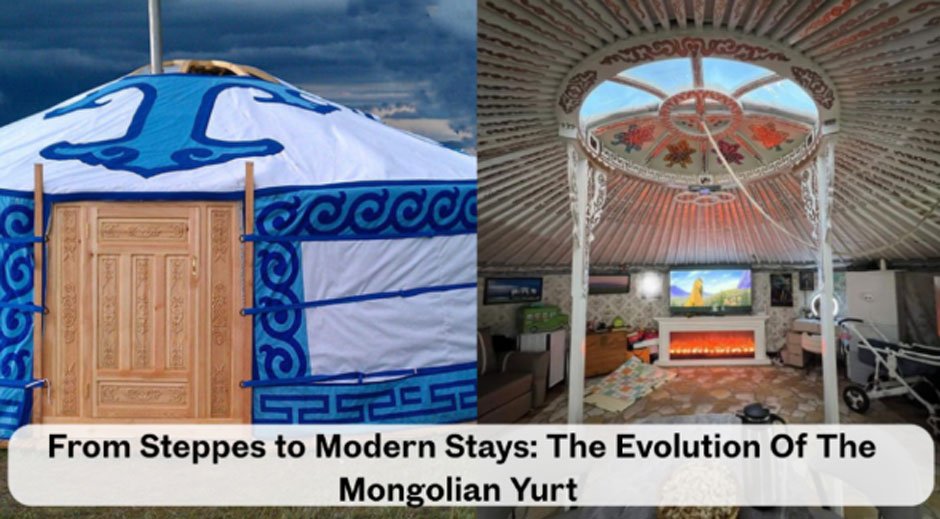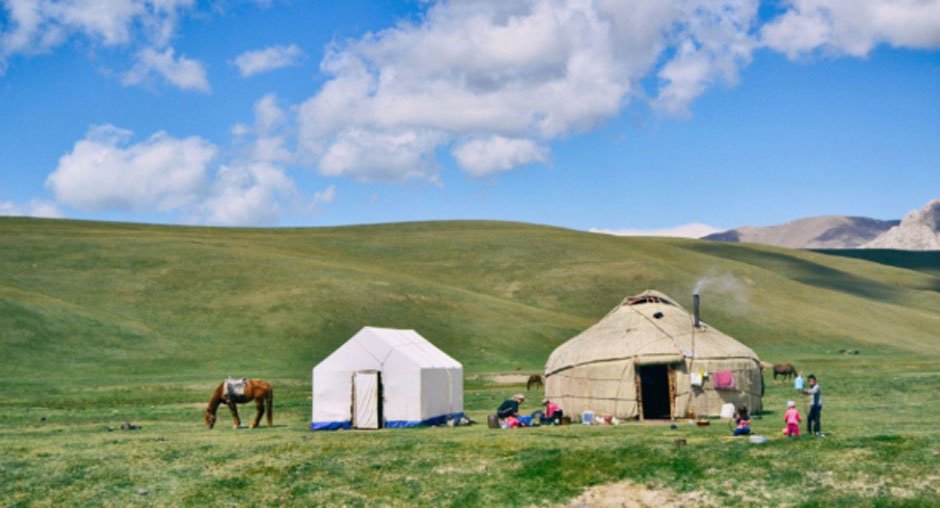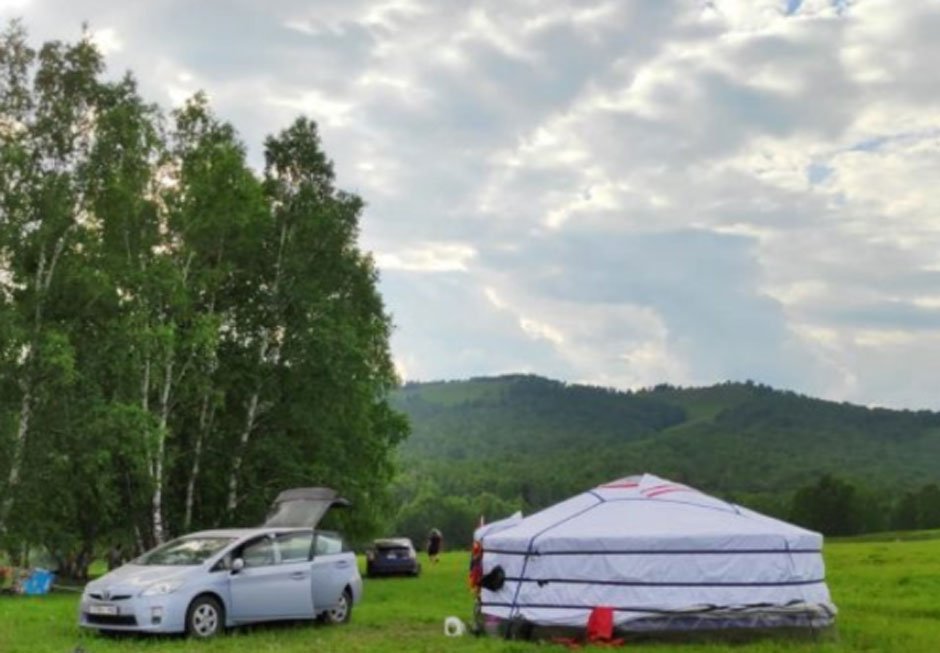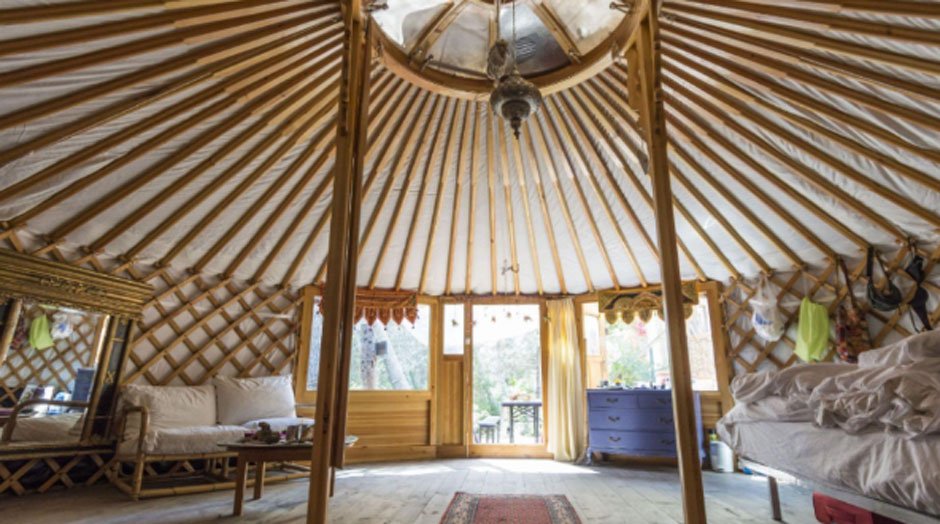
The Mongolian yurt is undoubtedly one of the most unique and appealing options for a home. It is a nomadic shelter that is several hundred years old and still standing. It’s more than a mobile home; it’s a representation of freedom, flexibility, and resilience.
Invented on the vast Asian steppes, the yurt kept the nomadic herders warm through chilling winters, cool during hot summers, all while supporting a mobile lifestyle. Round, airy, and robust, it symbolized balance, harmony, and community.
Designed for practicality, the structure could be set up or dismantled with ease, aligning perfectly with the rhythm of nomadic life while keeping deep cultural meaning. Today, Mongolian yurts are not just for the steppe.
They appear in eco-hotels, wellness retreats, and backyards, proving that timeless design can be updated and still retain its lineage. Let’s see the journey of Mongolians from the steppes to modern stays.
The Origins of the Mongolian Yurt

The Mongolian yurt (Ger) is one of the oldest portable home types in the world. Its rounded form and wood lattice walls are carefully chosen to meet the demands of nomadic life.
Mongolian yurts’ circular shape defended against the strong winds on the steppe. The wool of sheep insulated the yurts from both freezing winters and extreme hot summers.
A wooden crown, or toono, at the center anchored the structure and provided light and ventilation. Each feature was functional yet symbolic of the relationship between people and nature.
From Nomadic Steppes to Modern Settings
As lifestyles changed, so did the use of Mongolian yurts. Though nomads in Mongolia still depend on them, Mongolian yurts have come a long way beyond the steppes.
In recent decades, they’ve been taken up worldwide as both alternatives to traditional homes and as symbols of eco-conscious living. They’re part of the package at resorts and wellness retreats for a reason.
Some even construct modern Mongolian yurts as vacation cabins, studios or full-time residences. What’s so fascinating about this transition is the design of the Mongolian yurt.
The design has not undergone any significant changes since it was developed by the nomadic ancestors. The portability, insulation, and communion with the natural world that once drew herders in now appeal to people looking for sustainable housing options with a difference.
The Craft of Building a Mongolian Yurt
It requires experience and generational skills to build a proper Mongolian yurt. The construction begins with the khana, a folding wooden circle that forms the circular outer wall.
From this base, the poles of roofs rise upwards to a high central point and extend outwards, ensuring that all weight is distributed equally and the center remains exposed to sunlight, air, and ventilation. The frame is then insulated and protected with felt and canvas.
Modern yurts use sailcloth, felt, or plywood as the roof covering material, while those in traditional societies continue using materials similar to those of their ancestors. But the idea holds; a structure that is sturdy and portable.
It’s this blend of the old and the new that has preserved the Mongolian yurt into modern times.
Benefits of the Mongolian Yurt Today

Mongolian yurts offer advantages that can be appealing to modern living.
- Energy Efficient: By regulating temperature from the inside, not much heat or cooling is needed year-round.
- Mobility: They are easy to assemble and dismantle, making them ideal for brief periods or seasonal settlements.
- Connected to Nature: Mongolian yurts are the perfect way to get away from the city while still being close to experience it.
These are the reasons why Mongolian yurts are making a comeback in modern housing and lifestyle.
Why Mongolian Yurts Still Work Today
Mongolian yurts are relevant today because they are practical and successfully blend modern functionality with ancient wisdom.
- Insulation: It’s covered with several layers that act like double panes of glass to protect the house from cold in winter and heat in summer.
- Environmental Friendliness: The yurt is made of environmentally sound materials, and this fits in well with today’s focus on green living.
- A Unique Kind of Touch: Staying in a Mongolian yurt results in an all-around experience with nature.
Now that everything is evaluated from the standpoint of these three themes – logical utility, eco-friendliness, and high culture (aesthetic value) – it is clear why Mongolian gers are still used today by new lifestyles, new cultures, and new generations.
Mongolian Yurts as Bridges Between Past and Future

At its core, the Mongolian yurt serves as a bridge between cultures. They remind us of a way of life that focuses on mobility, resourcefulness, and harmony with nature.
In today’s era, they also point to the future in sustainable living. As more people look for eco-friendly alternatives to typical housing, the Mongolian yurt is an example where ancient wisdom combines modern innovation.
From the vast open steppes of Mongolia to modern resorts, retreats, and private hideaways, yurts have been incorporated throughout time. The circular shape, built-in mobility, and connection with nature reflect a rarely seen design that is both practical and beautiful.
Beyond being just simple shelters, Mongolian yurts tell stories of endurance, adaptability, and the profundity of culture. Today, they are more than dwellings, where each offers an experience.
They connect people with nature and provide comfort with sustainability. By changing to fulfill contemporary needs while maintaining their inheritance, Mongolian yurts remind us that lasting design is one that respects tradition as well as innovation and the environment.
